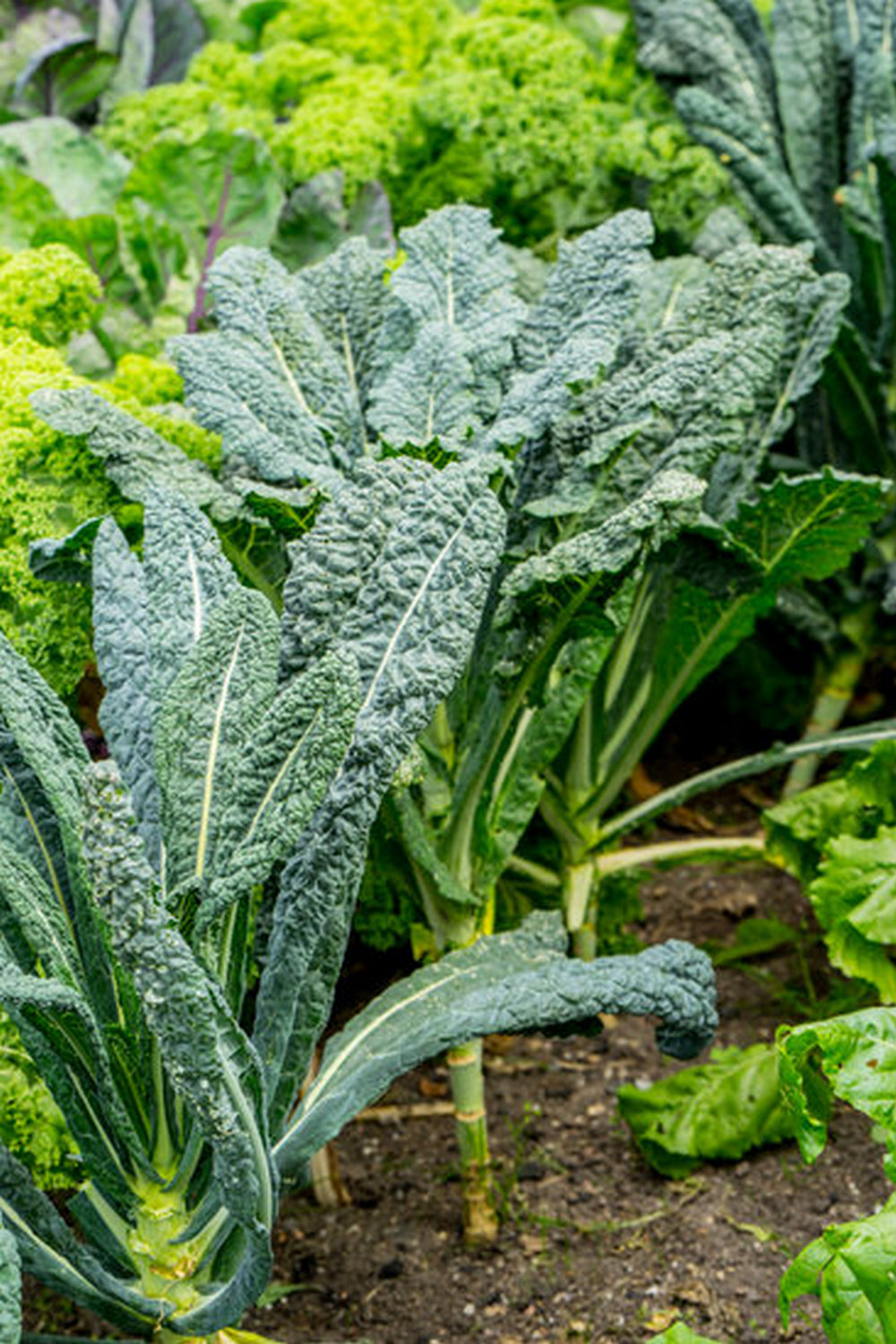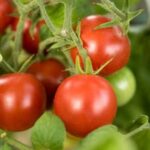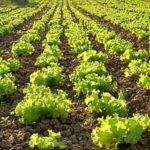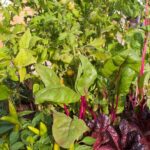Container gardening is a popular and convenient way for urban gardeners to grow their own fresh vegetables, even in limited spaces. Whether you have a small balcony, rooftop, or patio, container gardening allows you to cultivate a bountiful harvest right at home. In this article, we will explore what vegetables are best for container gardening and how you can set yourself up for success in growing your own produce.
Urban gardeners often face the challenge of limited outdoor space, making traditional gardening methods impractical. Container gardening offers a solution by allowing individuals to grow a variety of vegetables in pots, planters, or other suitable containers. By selecting the right vegetables and containers, urban gardeners can enjoy the benefits of homegrown produce without the need for a large garden plot.
When it comes to choosing the best vegetables for container gardening, factors such as plant size, sunlight requirements, and root depth must be taken into consideration. Vegetables like tomatoes, peppers, lettuce, and herbs are well-suited for container gardens due to their compact growth habits and adaptability to limited space. With proper care and attention to watering and fertilizing needs, container-grown vegetables can thrive and provide a rewarding harvest throughout the growing season.
Choosing the Right Containers
When it comes to container gardening, choosing the right containers is crucial for the success of your vegetable garden. There are various types of containers available, each with its own advantages and considerations to keep in mind. One popular option is terracotta pots, which provide good drainage for plants like tomatoes and peppers.
These pots also add a rustic charm to your garden space. Additionally, plastic containers are lightweight and come in various sizes, making them ideal for growing herbs or smaller vegetables.
Self-Watering Containers
Self-watering containers are another practical choice for those looking to minimize water maintenance tasks. These containers have a reservoir at the bottom that allows plants to draw up water as needed. This feature can be especially beneficial for busy urban gardeners who may not have time for frequent watering. Vegetables like lettuce and spinach thrive in self-watering containers because they require consistent moisture levels.
Hanging Baskets
For gardeners with limited floor space, hanging baskets offer a creative solution for growing vegetables in containers. Plants like cherry tomatoes and trailing herbs do well in hanging baskets, cascading down gracefully while still providing a bountiful harvest. Make sure to place these baskets in areas with adequate sunlight exposure for optimal growth. Hanging planters not only save space but also add visual interest to your urban garden setup.
Selecting the Best Soil Mix
When it comes to container gardening, selecting the right soil mix is crucial for the success of your vegetable plants. Unlike traditional garden beds, container gardens have limited space for roots to spread out and access nutrients. Therefore, using a high-quality soil mix is essential to provide adequate nutrition and support healthy growth. A good soil mix should be well-draining, retain moisture, and be lightweight enough for easy movement of containers.
One key factor to consider when choosing a soil mix for container gardening is its texture. A loose, well-aerated mix allows plant roots to access oxygen more easily, promoting better growth and reducing the risk of root rot. Look for soil mixes specifically designed for container gardening, as they are often formulated with a balanced combination of peat moss, perlite, vermiculite, and organic matter to create the ideal growing environment for vegetables.
Additionally, incorporating slow-release fertilizers into the soil mix can help provide a steady supply of nutrients to your plants over time. This is especially important for heavy feeders like tomatoes or peppers. Before planting your vegetables in containers, make sure to thoroughly moisten the soil mix to ensure proper hydration for the roots. Regularly check the moisture levels in the containers and adjust your watering schedule accordingly based on the specific needs of each plant.
| Choosing Soil Mix | Importance |
|---|---|
| Well-draining | Prevents waterlogged roots |
| Aerated | Promotes root oxygenation |
| Balanced nutrients | Sustains plant growth |
Best Vegetables for Container Gardening
Container gardening is a fantastic way to grow fresh produce even if you have limited space, such as in urban areas or small balconies. When choosing what vegetables are best for container gardening, it’s essential to select varieties that can thrive in a confined environment. Some vegetables do exceptionally well in containers, offering a bountiful harvest with the right care and attention.
Here are some of the best vegetables for container gardening:
- Tomatoes: Tomatoes are a popular choice for container gardening due to their versatility and abundant fruit production. Look for compact varieties like cherry tomatoes or determinate types that don’t require staking.
- Peppers: Peppers, both sweet and hot varieties, can flourish in containers as long as they receive adequate sunlight and warmth. Compact pepper plants like mini bell peppers or jalapenos are ideal for smaller pots.
- Herbs: Herbs are excellent candidates for container gardening, adding flavor to your dishes while enhancing the beauty of your garden. Basil, parsley, mint, and chives are just a few herbs that thrive in containers.
These vegetables not only thrive in containers but also offer the added benefit of convenience and accessibility. With the right care, proper watering, and suitable sunlight exposure, you can enjoy a continuous harvest of fresh produce right at your fingertips. Whether you’re a beginner or experienced gardener, growing these vegetables in containers can be a rewarding and fulfilling experience.
Tips for Successful Container Gardening
Container gardening is a popular choice for urban gardeners who may have limited space or poor soil quality in their yards. One of the keys to successful container gardening is selecting the right vegetables to grow. When deciding what vegetables are best for container gardening, it’s essential to consider plants that do well in confined spaces and can thrive with proper care.
Tomatoes are a favorite vegetable for container gardening due to their versatility and abundant yield. Varieties such as cherry tomatoes can be grown in hanging baskets or upright containers, while determinate tomato plants are great for compact spaces. Peppers, both sweet and hot varieties, also do well in containers and can add a pop of color to your garden. Additionally, herbs like basil, parsley, and mint are perfect for growing in pots on a sunny balcony or patio.
When planning your container garden, it’s crucial to pay attention to the sunlight exposure each plant requires. Most vegetables need at least 6-8 hours of sunlight per day to thrive. Watering is another critical aspect of successful container gardening. Vegetables grown in pots often require more frequent watering than those planted in the ground due to faster evaporation rates. Using a high-quality soil mix that provides proper drainage is essential for ensuring healthy plant growth in containers.
| Vegetable | Sunlight Needs | Watering Requirements |
|---|---|---|
| Tomatoes | 6-8 hours daily | Frequent watering due to faster evaporation |
| Peppers | Full sun | Regular watering to keep soil moist but not waterlogged |
| Herbs (Basil, Parsley, Mint) | 4-6 hours daily | Consistent watering; avoid letting soil dry out completely |
Companion Planting in Containers
Companion planting in container gardening is a strategic and beneficial approach to maximizing space, enhancing growth, and deterring pests in your vegetable garden. By selecting vegetables that complement each other in terms of nutrient needs, root structures, and pest-repellent properties, you can create a thriving mini ecosystem within your containers. Here are some popular combinations of companion plants that work well together in container gardens:
- Tomatoes, basil, and onions: Tomatoes provide shade for the basil while onions deter pests that commonly affect tomatoes.
- Carrots, radishes, and lettuce: Radishes help break up the soil for carrots to grow better, while lettuce acts as a living mulch to retain moisture levels.
- Cucumbers, beans, and corn: Beans add nitrogen to the soil which benefits cucumbers and corn while the corn provides support for climbing beans.
In addition to promoting healthier plants, companion planting can also increase crop yields and attract beneficial insects to your container garden. For example, marigolds are known to repel pests such as aphids and nematodes when planted alongside tomatoes or peppers. Additionally, interplanting fragrant herbs like rosemary or lavender with your vegetables can confuse pests with their strong scents.
When planning your companion planting arrangement in containers, consider the growth habits of each plant to ensure they do not compete for space or resources. By strategically pairing vegetables that support each other’s growth and deter harmful insects, you can create a harmonious and productive container garden. Experiment with different combinations based on your preferences and gardening goals to discover what works best for your space.
Common Container Gardening Mistakes to Avoid
When starting a container garden, it’s important to be aware of common mistakes that beginners often make in order to prevent them from hindering your gardening success. One of the most common pitfalls is using the wrong size container for your vegetables.
It’s essential to choose containers that are large enough to accommodate the roots of the plants you are growing. If the container is too small, it can restrict root growth and ultimately limit the plant’s productivity.
Another mistake to avoid is overwatering or underwatering your container garden. Each vegetable has specific watering requirements, so it’s crucial to research and understand the needs of the plants you are growing. Overwatering can lead to root rot and other diseases, while underwatering can cause wilting and stunted growth. Investing in a moisture meter can help you accurately gauge when your plants need watering, preventing these issues.
Additionally, neglecting proper drainage in your containers can also lead to problems for your vegetable garden. Without adequate drainage holes in the bottom of your containers, water can accumulate and drown the roots of your plants.
To prevent this issue, ensure that each container has sufficient drainage holes and consider using a layer of gravel or packing peanuts at the bottom to improve drainage. By avoiding these common mistakes and taking proactive steps to care for your container garden, you’ll set yourself up for a successful harvest of fresh vegetables right at home.
Creative Container Gardening Ideas
Container gardening is not only a practical way to grow vegetables in limited spaces, but it also offers an opportunity for creativity and innovation. By thinking outside the traditional gardening box, urban gardeners can explore unique methods to cultivate their favorite vegetables in containers. One popular approach to creative container gardening is through vertical gardens. Vertical planters allow growers to maximize space by stacking planters vertically, making use of walls or fences as growing surfaces.
Vertical Gardening
Vertical gardens are not only space-saving but also visually appealing. They can be created using a variety of materials such as wooden pallets, PVC pipes, or even repurposed items like shoe organizers. This method allows gardeners to grow a variety of vegetables such as lettuce, herbs, and strawberries while adding a green touch to their outdoor or indoor spaces.
Another innovative container gardening idea is the use of hanging planters. Hanging planters are versatile and can be suspended from ceilings, hooks, or railings. They are great for trailing plants like tomatoes or beans that need ample sunlight and space for growth. Additionally, hanging planters create a cascading effect that adds dimension and interest to any garden space.
Hanging Planters
Hanging planters come in various shapes and sizes, from traditional pots with hook attachments to macramé hangers for a bohemian touch. These types of containers offer an excellent solution for those with limited floor space or who want to add greenery to areas like balconies or patios. With proper care and maintenance, hanging planters can yield bountiful harvests of fresh vegetables throughout the growing season.
Incorporating vertical gardens and hanging planters into your container gardening repertoire can transform your space into a lush and productive oasis. By exploring these unique methods of vegetable cultivation in containers, you can unleash your creativity while reaping the benefits of homegrown produce right at your fingertips. Experiment with different designs, materials, and plant combinations to find what works best for your gardening style and needs.
Conclusion
In conclusion, container gardening offers a convenient and practical solution for urban gardeners who may have limited space but still want to enjoy the benefits of growing their own vegetables. By choosing the right containers, selecting quality soil mix, and planting the best vegetables for container gardening like tomatoes, peppers, and herbs, individuals can successfully cultivate a flourishing garden right on their balconies or patios.
Container gardening not only provides a sustainable source of fresh produce but also allows for easy maintenance and flexibility in adjusting sunlight exposure and watering needs. With proper care and attention to detail, even beginners can experience the joy of harvesting homegrown vegetables from their own containers.
Whether you opt for traditional pots, hanging planters, or vertical gardens, there are endless creative possibilities to explore in container gardening. By avoiding common mistakes and leveraging companion planting techniques to maximize space and productivity, anyone can transform their outdoor living space into a vibrant vegetable garden. So why wait? Start your container garden today and reap the rewards of fresh, nutritious produce grown right at home.
Frequently Asked Questions
What Vegetables Are Best to Grow in Containers?
Vegetables that are best to grow in containers include tomatoes, peppers, lettuce, radishes, and herbs like basil and parsley. These plants are well-suited for the limited space of a container and can thrive with proper care.
What Vegetables Grow Well Together in a Container?
When planting vegetables together in a container, it’s important to consider their compatibility in terms of light, water, and nutrient requirements. For example, tomatoes and basil make a great pairing as they have similar needs and can benefit from each other’s presence. Similarly, lettuce and radishes can be grown together as they have different root depths.
What Is the Rule of Thumb for Container Gardening?
The rule of thumb for container gardening is to ensure that your containers have adequate drainage holes to prevent waterlogging. Additionally, it’s crucial to choose the right size of container for the specific vegetable you’re growing – larger containers are generally better for plants with extensive root systems.
Regular watering and fertilizing according to plant needs are also essential for successful container gardening.

If you’re looking to get into vegetable gardening, or are just looking for some tips on how to make your current garden better, then you’ve come to the right place! My name is Ethel and I have been gardening for years. In this blog, I’m going to share with you some of my best tips on how to create a successful vegetable garden.





